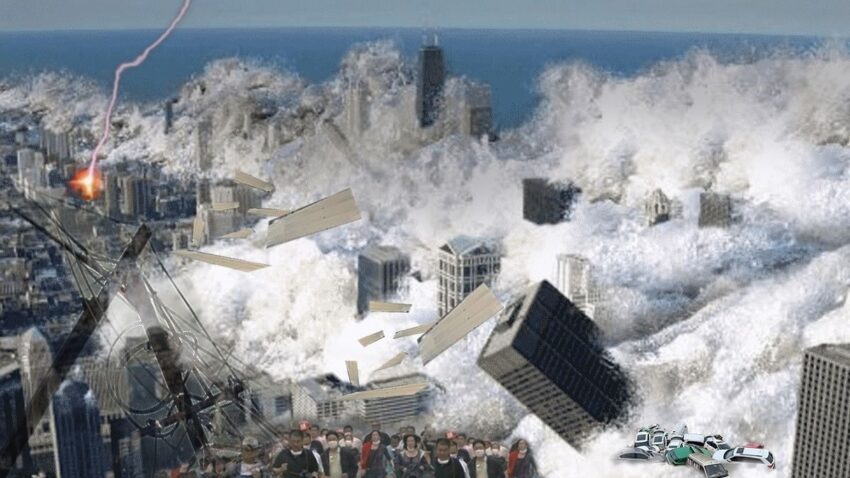On July 20, 2025, Russia’s Kamchatka Peninsula, a remote and rugged region in the Far East, was rocked by a series of powerful earthquakes, with the largest registering a magnitude of 7.4. These quakes, centered about 144 kilometers east of Petropavlovsk-Kamchatsky, triggered a tsunami warning that sent ripples of concern across the Pacific. As someone who follows global news, I find it fascinating—and a bit unsettling—how nature can remind us of its raw power in an instant. Let’s break down what happened, why it matters, and what we can learn from this event.
Table of Contents
A Shaky Morning in Kamchatka
The day started with a jolt as a magnitude 5.0 quake struck at 06:02 UTC, followed by a 6.7-magnitude tremor just minutes later. But it was the 7.4-magnitude earthquake at 06:49 UTC that stole the spotlight, occurring at a depth of 20 kilometers in the Pacific Ocean. According to the U.S. Geological Survey (USGS), smaller but significant quakes, including another 6.7, followed in quick succession. Living in a seismically active area myself, I can only imagine the fear and urgency felt by residents as buildings shook for about a minute, prompting many to flee outdoors.
Kamchatka, located at the intersection of the Pacific and North American tectonic plates, is no stranger to earthquakes. This region is a hotspot for seismic activity, with seven quakes of magnitude 8.3 or higher recorded since 1900. The recent swarm of quakes, though, was a stark reminder of the area’s volatility. Fortunately, there were no immediate reports of casualties or significant damage, which is a relief given the potential for destruction.
Tsunami Warnings Issued and Lifted
Following the 7.4-magnitude quake, the Pacific Tsunami Warning Center (PTWC) issued a warning for Russia’s Kamchatka Peninsula, highlighting the risk of hazardous waves within a 300-kilometer radius of the epicenter. Russia’s Emergencies Ministry echoed the alert, urging coastal residents to stay away from the shore. The ministry estimated wave heights of up to 60 cm in the Aleutsky District and 15 cm in Petropavlovsk-Kamchatsky. A separate tsunami watch was issued for Hawaii, raising concerns across the Pacific.
Thankfully, the PTWC downgraded the warning within hours, and by the end of the day, both the Kamchatka and Hawaii alerts were lifted. The ministry reported no significant tsunami waves, and no evacuations were deemed necessary. Reading about this, I couldn’t help but think of the 1952 Kamchatka quake, a magnitude 9.0 monster that sent 9.1-meter waves crashing into Hawaii. This time, we dodged a bullet, but it’s a sobering reminder of how quickly things can escalate.
Why Kamchatka Is a Seismic Hot Zone
Kamchatka’s location on the Pacific Ring of Fire makes it prone to earthquakes and volcanic activity. The peninsula sits where tectonic plates collide, creating immense pressure that releases in the form of quakes. This geological setup isn’t unique to Kamchatka—think of Japan or Alaska—but it does mean the region is always on edge. The recent quakes, occurring at relatively shallow depths, increased the risk of tsunamis, as shallow quakes can displace large volumes of ocean water.
What struck me is how interconnected our world is. A quake off Russia’s coast can trigger alerts thousands of miles away in Hawaii. It’s a testament to modern monitoring systems, like those run by the USGS and PTWC, that we can respond so quickly. But it also highlights the unpredictability of nature—no one can say for sure when or where the next big one will hit.
The Human Response: Staying Prepared
The lack of casualties or major damage is a win, but the event underscores the importance of preparedness. Russia’s Emergencies Ministry acted swiftly, advising residents to avoid coastal areas and preparing to inspect buildings for structural damage. In Hawaii, officials issued and then canceled a tsunami watch, showing how seriously they take even distant threats. As someone who’s experienced earthquake drills, I appreciate how these systems can save lives when every second counts.
For locals in Kamchatka, the shaking must have been terrifying, especially with memories of past disasters like the 1952 quake. Social media posts on X captured the moment, with videos showing homes trembling and residents’ relief when the tsunami threat was lifted. It’s a reminder to all of us to have emergency plans, whether it’s a go-bag or knowing the nearest high ground.
What’s Next for Kamchatka and Beyond?
With the tsunami threat over and aftershocks reportedly weakening, attention now turns to assessing any hidden damage. Russian authorities are inspecting buildings, and geologists will likely study this event to better understand the region’s seismic patterns. For the rest of us, it’s a chance to reflect on our own preparedness. Are we ready for the unexpected? Do we know what to do if a warning comes?
This event also highlights the power of global cooperation. From the USGS to Russia’s Emergencies Ministry to Hawaii’s alert systems, the response was coordinated and effective. As climate change and tectonic activity continue to shape our world, staying vigilant and informed is more important than ever. For now, Kamchatka breathes a sigh of relief, but the earth beneath us is always moving, and we need to be ready for what comes next.
